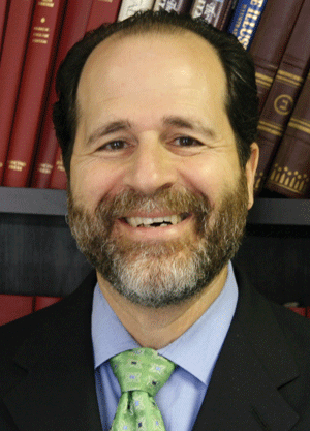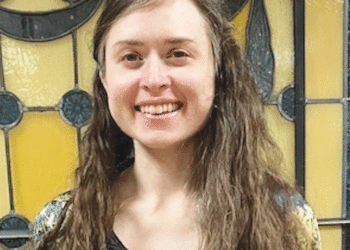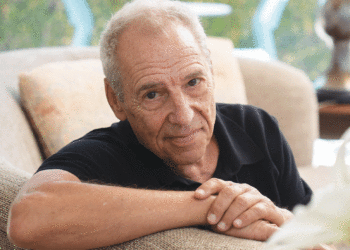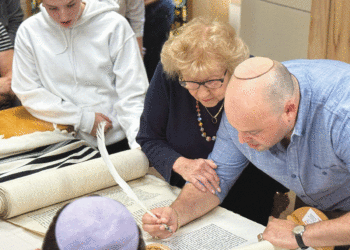Congregations, rabbis try various approaches to inhibit the post-B’nai Mitzva attrition of barely committed members
(Editor’s note: An abridged version of this story appeared in the “Weddings and Simchas” special section of the AJW’s May 27 edition.)
By MICHELE ALPERIN /Â Jewish Journal (Los Angeles)
The Bar and Bat Mitzva is traditionally viewed as an entry point into the adult Jewish community, but for many, it’s also seen as the door out of both Jewish education and the synagogue.
Among those who believe, however tenuously, that a B’nai Mitzva ceremony is de rigueur, some join traditional synagogues and others take a different path.
For those who become congregants, Los Angeles synagogues are trying to help B’nai Mitzva students and families understand that the ceremony and its preparation symbolize one point on a continuum of Jewish life and learning. Their goal is to strengthen the communal ties of their marginally committed congregants.
Trends in Judaism
For the substantial group of Jews who remain outside the synagogue world, B’nai Mitzva sometimes opens a small window into the organized Jewish community — one that can quickly slam shut when people encounter a three-year, pre-B’nai Mitzva “residency requirement” or a huge building fund. But sometimes a sensitive and flexible response by the synagogue can keep that window open just long enough to let a family in.
For families who have joined the ranks of the unaffiliated, the traditional B’nai Mitzva ceremony may not be a draw at all. But as individuals and families become more connected to their Judaism, adult B’nai Mitzva often play a more important role. The adult B’nai Mitzva ceremony is a way for adults to affirm their sense of belonging to the Jewish community.
 Rabbi Kerry Olitzky: We are using life-cycle events, both traditional and nontraditional, to nurture and develop relationships with interfaith families and children. (Photo: Jewish Outreach Institute)
Rabbi Kerry Olitzky: We are using life-cycle events, both traditional and nontraditional, to nurture and develop relationships with interfaith families and children. (Photo: Jewish Outreach Institute)
Most congregations are looking for ways to retain members who initially joined with the idea of remaining only long enough to see their children on the bima reading their Torah and haftara portions.
To inhibit the post-B’nai Mitzva attrition of barely committed members and entice otherwise uninvolved families into greater participation, synagogues around Southern California are trying a variety of approaches, including the institution of mandatory residency requirements, creating whole-family learning programs and reaching out to interfaith families.
The residency requirement is one way that synagogues are trying to ensure that the Bar Mitzva is not a swinging door. They are working hard to redefine the ceremony’s meaning for their congregants.
Cantor Evan Kent at Temple Isaiah wants to convey to all families that the Bar Mitzva is just one point in their Jewish education.
“It’s not a product,” he said. “It’s a process that begins the day that the child is born.”
But this view, and the residency requirement that supports it, can also set up what may seem like an insurmountable barrier for an unaffiliated family that doesn’t even think about B’nai Mitzva until its children are 12.
Kent is quick to say that his synagogue will find a way if these children are willing to study with a private tutor for a ceremony that may not take place until they are 14 or 15.
However, he maintains that any significant weakening of the residency requirement can create a conflict for a synagogue whose goal is to create habits of lifelong learning.
Providing a child only with the minimal skills needed to fulfill the requirements of the ceremony is anathema to Kent.
“Then you’re just producing B’nai Mitzva,” he said. “What about learning history and culture, and developing skills, and learning ethics and the importance of prayer in your life?”
For those people who, though uncommitted, are willing to join a synagogue for the required two or three years, the Bar/Bat Mitzva process can be a way to help parents identify with the synagogue community.
To draw in parents, many synagogues have special programs either for them alone, or with their children. At Temple Isaiah, a Bar Mitzva family education program helps the family figure out what the ceremony means to them and where the B’nai Mitzva fits in the chain of generations. The families meet three times. First, they take an inventory of their own Jewish roots. The next time, they study Torah together. At a third meeting, a family therapist meets separately with parents and children.
“You start to have families realize they are not alone,” Kent said.
At Cantor Aviva Rosenbloom’s synagogue, Temple Israel of Hollywood, families attend Torah study sessions with the rabbi for five or six Saturday mornings in a row.
“They get introduced to the process and excitement of Torah study,” she said. “Kids study with adults, so they learn from each other, and they meet other families going through the process at the same time.”
Another way to pull in the parents is to offer classes that run concurrent with the children’s religious school.
In addition to its ongoing adult and youth programming, Temple Ahavat Shalom in Northridge offers the Parent and Child Education program, which features a morning of workshops and speakers for parents and children.
“It is something that keeps people aware and alive, emotionally, spiritually, culturally and intellectually,” said Cantor Patti Linsky at Temple Ahavat Shalom.
Such congregational efforts are an attempt to emphasize to families that B’nai Mitzva is a communal, not an individual experience. And it’s a lesson they start to teach early on.
Linsky explained that at consecration, they refer to the group of young children as the confirmation class of 12 years hence; for example, this year’s group would be the class of 2023. Then at age nine, when they start Hebrew school and are finally allowed to attend adult High Holy Day services, students are told it is a privilege they have earned.
The Bar Mitzva, then, is merely a single point in a lifetime of Jewish learning.
“We are very honest with our kids,” Linsky said. “We give them boundaries and let them know this is a serious thing. The process they follow along the way is as important, if not more important, than the outcome. It’s about how they choose to live their life.”
Congregations are also starting to give special attention to intermarried families as they negotiate the process of B’nai Mitzva. Particularly delicate for them is how the non-Jewish spouses are treated during the ceremony. If they are made to feel unwanted in this period, they may be out the door for good when the ceremony is over. Nationally, the Jewish Outreach Institute (JOI), in partnership with STAR (Synagogues: Transformation and Renewal), is conducting a pilot program, “Call Synagogue Home,” in the West San Fernando Valley. Participating synagogues take part in a one-day seminar, which focuses on creating a connection with interfaith families around lifecycle events, including B’nai Mitzva.
“We are using lifecycle events, both traditional and nontraditional, to nurture and develop relationships with interfaith families and children,” said Rabbi Kerry Olitzky, the institute’s executive director. “We help congregations to see where they can say yes, as opposed to focusing on where they have to say no.”
While the program is initially focused on weddings, JOI has prepared a manual about B’nai Mitzva that explains how rabbis might tackle typical problems that come up for interfaith or unaffiliated families.
One of JOI’s recommendations is a more flexible residency requirement.
“We help congregations recognize that there are going to be families who don’t approach a synagogue until close to the Bar or Bat Mitzva,” Olitzky said. “They don’t recognize that many synagogues have a schedule that chooses dates three years in advance and religious schools that require several years of preparation and commitment.”
If a three-year commitment is what the synagogue is looking for, he suggested, then perhaps the clergy should ask people to commit for the three years after the ceremony, rather than before.
The program helps rabbis separate issues of Jewish law from those of synagogue culture, for example, where a non-Jewish parent can stand on the bima, who can handle the Torah, who can be involved in a ceremony to pass the Torah across generations or parental blessings that do not include formulas about chosenness.
“We don’t want to force synagogues to do things that are beyond their set of principles or guidelines, but we want to stretch them to their comfort level,” Olitzky said.
One rabbi participating in the Jewish Outreach Institute’s program is Richard Camras of Shomrei Torah Synagogue in West Hills. As a young rabbi, Camras felt that by building walls he might be able to change the culture of the community and force the issue of conversion.
But after spending eight years overseeing a communitywide keruv (outreach) program, the Project on Intermarriage, he realized he wasn’t going to change the trend to intermarriage. As a result, he is determined to reach out in significant ways to families where there is not going to be a conversion, yet still remain committed to the values of endogamy.
When it comes time for a Bar Mitzva in an interfaith family, where the non-Jewish partner has committed to raising Jewish children and creating a Jewish household, he acknowledges their commitment from the bima. The non-Jewish parent participates as fully as possible in the ceremony, presenting the tallit with the Jewish spouse and offering blessings from the bima during the Torah service. Camras also involves non-Jewish family members by having them do readings during the service.
Building a strong identification with a synagogue may effectively hold on to those marginally committed and intermarried families who have stepped inside the institutional door. But for people who remain unaffiliated — either because they were turned off at some point in their lives, were never turned on or are suspicious of the organized Jewish community — other rabbis in Los Angeles are here to help out. They are reaching out both to families looking for a Bar/Bat Mitzva without a several-year commitment and those for whom such lifecycle ceremonies are not yet even a twinkle in their eyes.
Rabbi Stanley Levy at B’nai Horin reaches out to unaffiliated families whose children would otherwise not have a Bar Mitzva. They might have been turned off by a negative Hebrew school experience, turned away because of a residency requirement or simply can’t afford the expense of joining a synagogue with a building fund.
Families do not need to join Levy’s congregation to go through the Bar Mitzva program. The students are asked to study for two hours with Levy on Sunday mornings for a year and to work with a tutor to master Hebrew reading, chanting of the central Jewish prayers, and chanting Torah and haftarah portions. But Levy noted that the expectations are suited to the child’s learning ability, and “everything is modifiable.” The child also spends an hour a week with Levy studying the meanings of the prayers.
Levy has relationships with a half-dozen synagogues that make their facilities available for the B’nai Mitzva, or he holds them at other locations.
Whatever the location, a child reads from B’nai Horin’s Holocaust memorial scroll from Czechoslovakia. Levy believes this creates a connection with the Holocaust, and he tells his students they are doing their Bar or Bat Mitzva on behalf of a child who died in the Holocaust and never had a chance for one.
The Sunday morning class covers Jewish history and Torah, the Holocaust and contemporary moral issues facing teens — entirely through film. The class also takes field trips to the Museum of Tolerance and to the Skirball Museum.
Although Levy has had some success inspiring families and children to a continuing Jewish commitment, that is not his primary emphasis.
“My major goal,” he said, “is for a kid to feel at the end of the Bar or Bat Mitzva experience this was a fantastic experience, I learned lot about myself and Judaism, I loved being Bar or Bat Mitzva-ed and I’d recommend it to anybody.”
For two other communities, Nashuva and Ahavat Torah, the focus is on reaching out to the unaffiliated, but the B’nai Mitzva of children is not necessarily part of the equation. Ahavat Torah’s members are primarily middle-age professionals who want to reconnect with their spirituality.
“They are very successful in their secular lives, and they have a unique, huge desire to reach into their neshamas [souls] and fill the gap in their hearts,” said Rabbi Miriam Hamrell, who has been with the small, intensively communal synagogue for all of its five years.
The adult Bar/Bat Mitzva satisfies this need for many members. So far, the synagogue has held Bar/Bat Mitzvas for 10 adults and two children with special needs. Hamrell is currently working with a group of women in prisons to prepare them for an adult Bat Mitzva.
The rabbi, who at 31 had an adult Bat Mitzva at Stephen S. Wise Temple in Bel Air, contrasted adult and children’s B’nai Mitzva. With children, she said, the parents are fulfilling their obligation. But today’s adults are looking for something unique, not the same thing they ran away from in Hebrew school. Mature people search to either fulfill a lifetime desire of their own or satisfy an intensely felt spiritual need.
While Westwood-based Nashuva has attracted many younger families whose children are several years off from any notion of B’nai Mitzva, the congregation has already celebrated a couple of adult B’nai Mitzva.
Nashuva’s goal “is to create an environment where unaffiliated Jews can find their way back to Jewish faith, to a deeply soulful Judaism that connects prayer to action,” said Rabbi Naomi Levy, wife of Jewish Journal Editor-in-Chief Rob Eshman.
Nashuva meets monthly for services, and every service is connected to an action event. For Thanksgiving, for example, Nashuva shares a kosher Thanksgiving feast with indigent people at the Hope Street Center.
At Nashuva, people are seeking out Judaism at different points in their lives and at different ages. In terms of Bar Mitzva, Levy cited a scenario she thought typical of her community.
A 16-year-old boy came to her saying, “I want to have a Bar Mitzva.” Although he and his family identified positively as Jews, they had no formal Jewish education, couldn’t read Hebrew and had never belonged to a synagogue.
But this kid, whom Levy described as looking like a “Venice Beach dude,” started a course of study and had a Bar Mitzva — without a party — that served as a rite of passage for him and a source of inspiration for his family, as well as the whole community.
“It created a scenario of beauty and intensity, because it was his,” Levy said. “Even his parents were surprised by his intensity and passion.”
Thinking into the future about Bar and Bat Mitzva for the kids at Nashuva, Levy said, “I think we have an opportunity to create something magical. Most of our kids are little — 5, 6 or 7 — but I see already the kind of power that we can take into a long-term look at Bar Mitzva and beyond — not Bar Mitzva and fall off a cliff.”
She added, “Part of it is constantly reinventing yourself, executing things differently so people don’t think of it as something predictable — I have to do this, and then it’s over.”
***
Michele Alperin is a freelance writer and a former lifecycle editor for MyJewishLearning.com. She has a master’s degree in Jewish education from the Jewish Theological Seminary.
This article originally appeared in the Jewish Journal of Greater Los Angeles.
(American Jewish World, 5.27.11)









 Rabbi Kerry Olitzky: We are using life-cycle events, both traditional and nontraditional, to nurture and develop relationships with interfaith families and children. (Photo: Jewish Outreach Institute)
Rabbi Kerry Olitzky: We are using life-cycle events, both traditional and nontraditional, to nurture and develop relationships with interfaith families and children. (Photo: Jewish Outreach Institute)










